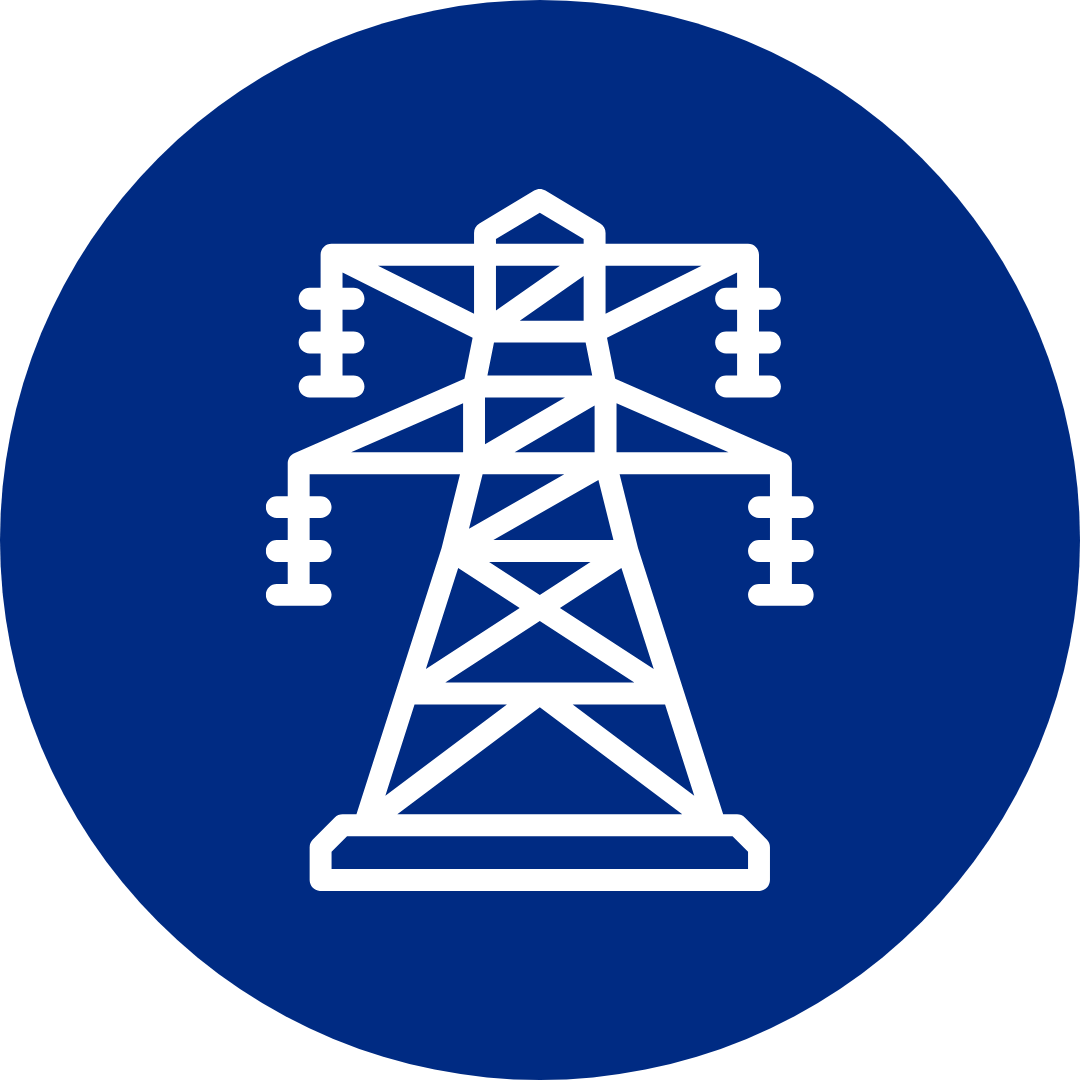Many people notice their electrical cables feeling hot or even smelling burnt, and wonder what is going wrong. Electrical cables overheat most often because of overloading, loose connections, or damage to the cable or plug. When wires carry too much current, are not installed properly, or have poor contact at joints, excess heat builds up and can create real safety risks.
Ignoring these warning signs can lead to melted insulation, tripped circuit breakers, or even fire hazards in the home. By paying attention to the signs of trouble and understanding what causes cables to overheat, homeowners can better protect their household and avoid costly damage.
Key Takeaways
Overheating usually results from overloading or poor cable connections
Damaged insulation or plugs can increase fire risk
Circuit breakers may not always stop overheated cables from becoming dangerous
Improper Cable Selection: A Common Culprit
Choosing the wrong cable is a frequent cause of overheating. Not all wires are made to handle the same amount of electricity. If a cable is too thin for the job, it can heat up during use.
Wire size matters. The thicker the wire, the more current it can safely carry. Using a wire that is too small for your electrical load can cause it to overheat, melt, or even catch fire.
Here is a simple table to show common wire gauges and their uses:
Wire Gauge (AWG) | Typical Use | Max Amps (approx.) |
14 | Lighting, outlets | 15 |
12 | Kitchen, bathroom outlets | 20 |
10 | Air conditioners, dryers | 30 |
When using an extension cord, the same rule applies. Many extension cords sold in shops use thin wires that are safe only for small devices. Plugging in heaters or other high-power devices into a thin extension cord may lead to dangerous overheating.
Signs of improper cable selection include:
Warm or hot cables to the touch
Discoloured or melted insulation
Circuit breakers that trip often
To avoid these problems, always check the current rating and size (gauge) of the cable before use. Following manufacturer instructions and electrical codes helps keep your home safe.
The Role of Cable Resistance in Heat Generation
All electrical cables have some level of conductor resistance. This resistance is a natural property of the material inside the wire, usually copper or aluminium. When electricity flows, resistance causes some energy to turn into heat.
The amount of heat created depends on two main factors:
Higher resistance means more heat for the same amount of current. If the cable is thin, uses a low-quality metal, or is damaged, resistance increases. This can make the cable heat up more than normal.
A simple equation helps explain this process:
Factor | Effect on Heat Generation |
Resistance | More resistance = more heat |
Current | More current = much more heat (increases quickly) |
Faulty connections, corrosion, or using the wrong cable size can also raise resistance. Over time, heat can damage the cable even more, leading to dangerous situations.
To reduce overheating, it is important to:
Use cables with correct conductor resistance
Make sure all connections are tight and not corroded
Replace old or damaged cables
Choosing the right cable for the job is essential. Lower resistance and the right size help keep temperatures safe during use.
Overloading Your Cable: What Happens When It’s Too Much?
When an electrical cable carries more current than it is designed for, it's called an overload. This often happens when too many devices pull power from a single cable or outlet.
Effects of Overloading:
The wire heats up quickly.
The cable insulation can start to break down.
Fire risk increases as melted insulation can expose live wires.
The power supply may become unstable, causing devices to malfunction.
Sign | What to Watch For |
Warm or hot cable | Uncomfortable to touch |
Flickering lights | Lights dim or blink |
Burning smell | Smell near wires or plugs |
Tripping breakers | Circuit trips often |
Heavy loads like heaters, air conditioners, or large kitchen gadgets use lots of electricity. Plugging these into cables not rated for such loads can cause overheating fast.
Cables installed too close together or in places without enough air flow cannot cool down well. This makes the problem worse when under heavy loads.
To avoid overload, split the load by plugging high-power devices into different circuits. Use proper cables rated for the power needed. Circuit breakers help, but should not be relied on as the only safety check.
Ignoring signs of overload puts people and property at risk. Always match your load with the right cable and power supply for safe operation.
Installation Matters: How Cable Arrangement Affects Heat Dissipation
How cables are installed plays a big role in how well they release heat. If cables are placed too close together, it’s harder for air to move around them. This makes it difficult for heat to escape.
Good ventilation helps cables cool down. Cables packed in dense bundles can overheat more easily because the heat has nowhere to go. Placing cables with enough space between them improves air flow and heat dissipation.
Cable length also matters. The longer a cable, the greater the chance of heat building up along its length, especially if there is poor ventilation or many cables are grouped together.
Common issues caused by poor arrangement:
Overheating
Reduced cable life
Higher risk of failure
Arrangement Type | Ventilation | Heat Dissipation | Overheating Risk |
Spaced apart | Good | High | Low |
Bundled closely together | Poor | Low | High |
To reduce overheating, installers should avoid bundling cables too tightly. Leaving gaps between cables and ensuring a clear path for air helps manage temperature better.
Simple steps like using cable trays or spacers, and avoiding sharp bends, support safer installations and better heat control. These choices help keep both the cables and the connected devices working well.
Loose Connections and Poor Manufacturing: A Hidden Risk
Loose electrical connections are a common cause of overheating in cables. When a connection is not tight, electricity does not flow smoothly. This can create extra resistance and cause heat to build up at the joint.
Heat from loose connections may lead to burnt wires, damaged outlets, or even blown fuses. Over time, the heat can break down insulation, increasing the risk of fire.
Poor manufacturing is another hidden risk. Cables with faulty wiring, low-quality materials, or uneven conductor thickness may not handle normal electrical loads.
Signs of loose or poorly made connections include:
A table showing the risks:
Problem | Potential Risk | Common Fix |
Loose connections | Overheating, fire | Tighten or replace wires |
Poor manufacturing | Short life, heat | Use certified cables |
Blown fuses | Power loss | Inspect for root cause |
If a blown fuse keeps happening, it can be a sign of loose connections or a poor-quality cable. These problems should be checked by a qualified electrician.
Ignoring these warning signs can lead to more serious electrical faults and higher repair costs. Regular inspections can help find and fix these hidden risks early.
The Impact of Damaged Cable Sheaths and Insulation
A cable’s sheath and insulation protect the inner wires from harm. When these layers become damaged, the risk of overheating increases. Small cracks or splits can expose conductors to moisture or air.
Over time, heat, cold, pressure, or chemicals can weaken insulation. Animals, pests, or physical abrasion may also damage the outer layers, making cables more vulnerable.
Exposed conductors can lead to:
Short circuits
Electrical arcing
Increased resistance
Risk of electric shock
Damaged insulation is less effective at containing electricity within the wire. This can cause the wire to heat up more than usual, even during normal use.
Here is a simple table showing common problems with damaged cable sheaths and insulation:
Problem | Possible Result |
Cracked Sheath | Water entry, corrosion |
Worn Insulation | Heat build-up |
Exposed Wire | Short circuit risk |
Brittle Outer Layer | Further cracking |
PVC (plastic) insulation, when overheated, may develop microscopic cracks. These cracks let electrical current leak, which can make cables hot and unsafe.
If the damage is severe, cables could fail completely. Visual signs include fraying, exposed wire, or melting insulation. These signs mean the cable should be replaced immediately to avoid accidents.
Cable Overheating and Fire Hazards: What You Need to Know
Overheating is a key warning sign of electrical problems. When a cable gets too hot, the risk of an electrical fire rises. Warm or discoloured cables should never be ignored.
Several issues can cause cables to overheat. Common causes include:
Overloading: Plugging too many devices into one socket increases current and heat.
Poor ventilation: Bundled or coiled wires trap heat, making it hard to cool down.
Old or damaged insulation: Wear and tear can expose wires and make overheating more likely.
Faulty appliances: Malfunctioning devices can draw excessive current, straining cables.
Fuses and circuit breakers are safety devices. They are designed to cut power when there is too much current. If a fuse blows or a breaker trips, it could mean the cable is overheating.
Look for these fire warning signs:
Sign | What It Means |
Burning smell | Possible overheating |
Discoloured sockets | Excess heat or melting |
Flickering lights | Loose or stressed wiring |
Repeated blown fuses | Overloaded or failing cable |
Electrical safety is vital in every home. Avoid running wires under carpets or furniture where heat cannot escape. Replace worn cables promptly.
Tip: Only let qualified electricians repair electrical problems. Using the right cable for each job and following safe practices helps prevent electrical fires.
How Poor Plug and Socket Connections Contribute to Overheating
Loose connections between plugs and sockets are a common problem in many electrical systems. When the connection is not tight, electricity faces resistance as it passes through the contact points.
This resistance produces excess heat. Over time, heat can build up and cause the plug or socket to feel hot to the touch. In some cases, this can even melt the plastic parts.
Several factors can cause poor connections:
Worn or damaged contacts inside the socket or plug
Corrosion on metal parts, often from moisture
Loose wiring due to improper installation or age
A table can help show the possible effects of poor connections:
Problem | Result |
Loose connection | Increased heat |
Corroded contacts | Unstable power flow |
Damaged plug or socket | Risk of electrical burns |
Old or faulty wiring | Possible fire hazard |
The more the connection degrades, the harder it is for electricity to flow safely. This adds stress to the entire electrical system. Overloading plugs or using high-power devices with poor connections increases the risk even further.
Identifying a warm or discoloured socket early can help avoid serious hazards. Regular checks and quick repairs keep the electrical system safe and working well.
When to Replace Your Electrical Cables: Signs of Trouble
Knowing when to replace electrical cables is important for safety and reliability. Certain warning signs can help people spot issues early.
Signs you may need to replace your cables:
Frequent overheating: If a cable feels very hot or warms up quickly, this is a strong warning sign.
Damaged or melted insulation: Heat can cause the plastic sheath around the wires to melt or become brittle.
Discolouration or burning: Black marks or burnt spots on outlets, plugs, or cables suggest overheating.
Exposed wires: If the covering is cracked or worn, live wires may be visible.
Flickering lights or power loss: Unstable power or lights that blink may mean the cable is failing.
Strange smells: A burning or fishy smell near outlets or wires often means insulation is overheating.
Here is a quick reference table:
Warning Sign | What It Means |
Warm or hot cables | Possible overload or loose connection |
Melted plastic sheath | Severe overheating, urgent attention needed |
Burn marks or odour | Potential fire hazard |
Sparking or buzzing | Dangerous electrical fault |
Frequent tripping | Circuit can't handle the load |
If any of these signs appear, the cable should be checked by a qualified electrician. It is important not to ignore these signals, as damaged cables can lead to electric shock or fire. Early action can prevent injuries and property damage.
Tips for Preventing Overheating in Your Electrical Cables
Regular inspection is key for stopping cables from overheating. Check cables, especially solar cables and those connecting to a battery bank, for any damage, fraying, or poor connections at least twice a year.
Limit the use of power strips and avoid plugging too many devices into a single outlet. Overloading outlets can cause both wires and connectors to heat up quickly.
Keep cables spaced apart and allow for air flow. Cables that are too close together or packed in tight places may not cool down properly. This is important for areas where cables may be clustered, such as behind entertainment units or in electrical maintenance rooms.
Follow correct installation practices for all solar and electrical cables. Poor installation can lead to loose connections or overloaded wires, which are common causes of overheating.
Here is a quick table of checks to make during maintenance:
Task | Why It Matters |
Inspect cable connections | Prevents poor contact |
Test for hot spots | Finds early overheating |
Clean around cables | Reduces dust build-up |
Replace damaged cables | Avoids fire risk |
If you are unsure about any wiring, contact a qualified electrician. Proper electrical maintenance not only keeps cables cool but also keeps everyone safe. Promptly replace any worn or faulty cables, especially on solar panels or battery bank connections.
When to Call an Expert: Identifying Serious Overheating Issues
Not all overheating problems can be fixed with simple solutions. Some signs mean it is time to stop and call a qualified electrician straight away.
Warning Signs That Need Immediate Attention:
The cable feels hot to the touch
You notice burning smells, smoke, or charring near wires or outlets
Circuit breakers trip often or fuses blow repeatedly
There are visible burn marks or melted insulation on cables
If any of these occur, isolate the power safely if possible. Do not try to handle the problem alone.
Serious issues may include:
Continued overheating after minor repairs
Frequent, unexplained loss of power
Signs of electrical damage on walls or sockets
A qualified electrician has the right tools and experience. They can check:
Never ignore signs of overheating or try risky “DIY” fixes for these issues.
A licensed electrician should always be involved if there are safety risks or repeated problems. Calling a professional protects both people and property.
If you are unsure if it is serious, it is safer to ask an expert. Proper inspection now can prevent fires or costly repairs in the future.
Contact a qualified electrician for help with:
Frequently Asked QuestionsWhat causes a cable to overheat?
A cable may overheat if too much current flows through it. Poor-quality materials, damaged insulation, or an undersized cable for the load are common reasons. Mechanical damage and poor installation can also contribute to heat build-up.
How do you stop cables from overheating?
To stop cables from overheating, make sure the cable size matches the need of the electrical load. Use quality cables and check that they are installed correctly. Regular inspections are important for spotting wear, damage, or overloading early.
Why is my electrical cord getting hot?
An electrical cord could be getting hot because it is overloaded with too many devices plugged in at once. It could also be due to a damaged cord or a loose connection at the plug or outlet.
What does it mean when electrical wires get hot?
When electrical wires get hot, it often means more current is running through them than they are designed to handle. This is a warning sign and should not be ignored, as it could lead to fire hazards.
What protects wiring from overheating?
Fuses and circuit breakers are common devices that protect wiring from overheating. They interrupt the circuit if the current gets too high, helping stop fires or equipment damage.
How do you stop wires from heating?
To prevent wires from heating, use the correct wire size for the job and avoid overloading circuits. Make sure all connections are secure and replace wires that show signs of damage or wear.
What are the two devices that can keep a circuit from overheating?
Circuit breakers and fuses are the two main devices that prevent circuits from overheating. They break the flow of electricity when too much current is detected.
Alarm Cable
Arctic Grade Cable
Armoured Cable
Audio & Speaker Cable
Auto Cable
Bare Copper
Belden Equivalent Cable
Co-axial Cable
Data Cable
DC Telecom Cable
Defence Standard Cable
Emergency Lighting & Fire Detection Cable
EV Cable
Festoon
![Loose Tube Fibre Cross Section]()
Fixed Wiring PVC & LSOH Cable
Flatform
Flexible Control Cable
Flexible PVC Cable
Flexible Rubber Cable
General Wiring Cable PVC & LSOH
High Temperature Cable
High Voltage Cable
![5308 p1 t2 cat Cross Section]()
LSOH Flexible Cable
Medium Voltage Cable
NYY & N2XH Cable
Protected Wiring Cable
Silicone Cable
Solar Cable
Split Concentric Cable
Spiral Cable
Temporary Power Cable
Tri-Rated Cable
Welding Cable
Alarm Cable
Arctic Grade Cable
Armoured Cable
Audio & Speaker Cable
Auto Cable
Bare Copper
Belden Equivalent Cable
Co-axial Cable
Data Cable
DC Telecom Cable
Defence Standard Cable
Emergency Lighting & Fire Detection Cable
EV Cable
Festoon
![Loose Tube Fibre Cross Section]()
Fixed Wiring PVC & LSOH Cable
Flatform
Flexible Control Cable
Flexible PVC Cable
Flexible Rubber Cable
General Wiring Cable PVC & LSOH
High Temperature Cable
High Voltage Cable
![5308 p1 t2 cat Cross Section]()
LSOH Flexible Cable
Medium Voltage Cable
NYY & N2XH Cable
PAS - BS5308 Instrumentation Cable
Protected Wiring Cable
RS-232 Cable
RS-485 Cable
Silicone Cable
Solar Cable
Split Concentric Cable
Spiral Cable
Telephone Cable
Traffic Signal Cables
Temporary Power Cable
Tri-Rated Cable
Welding Cable
Airports
Automation & Process Control
![Automotive]()
Building & Construction
Communication & Telecommunication
Data Centres
Defence
![DNO 1]()
E-Mobility
Food & Beverage
Marine & Offshore
Mining, Drilling & Tunnelling
OEMs
Oil, Gas & Petrochemical
Rail & Metro
Renewable Energy
Switchgear
Power
Water Treatment













































